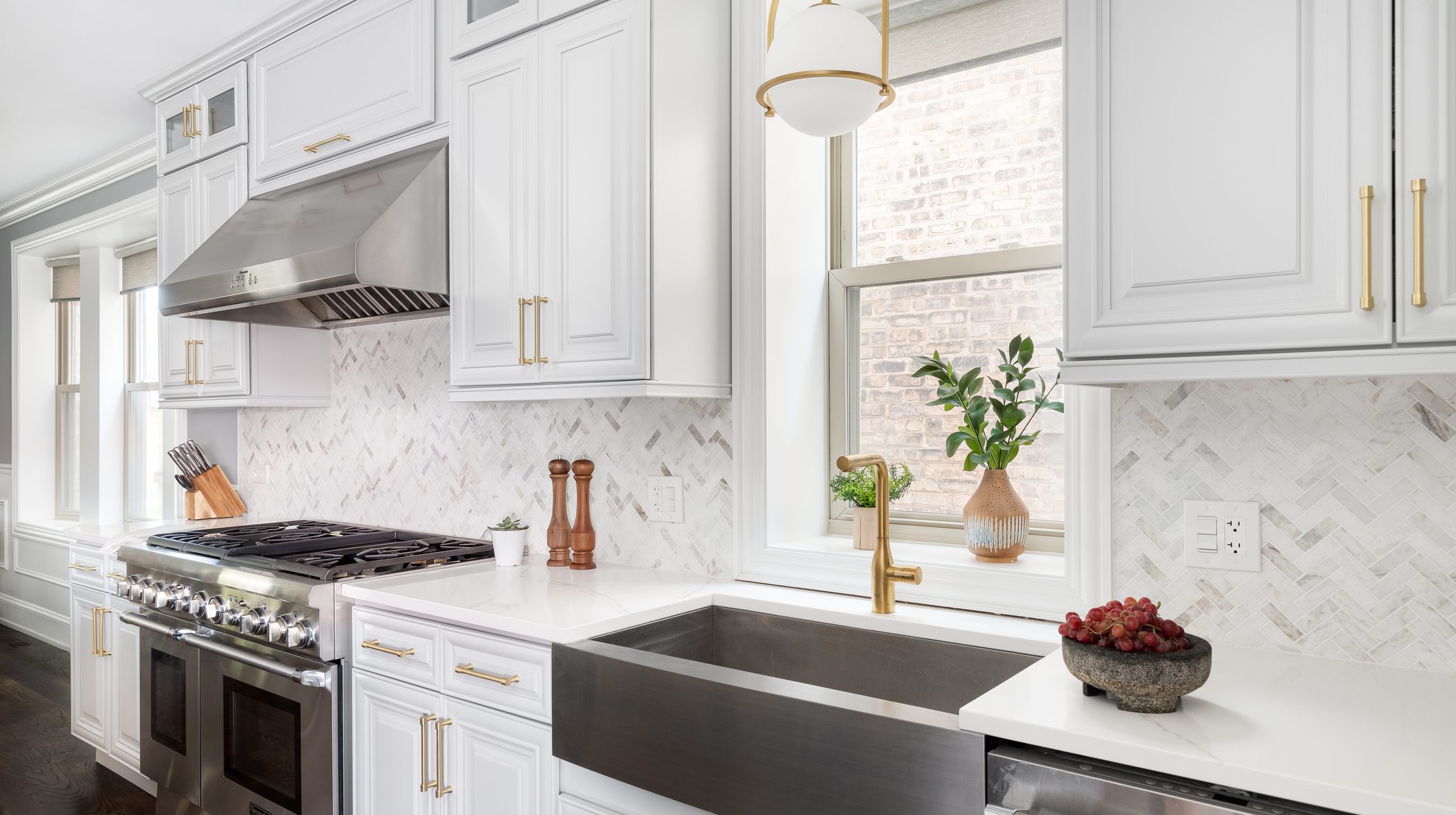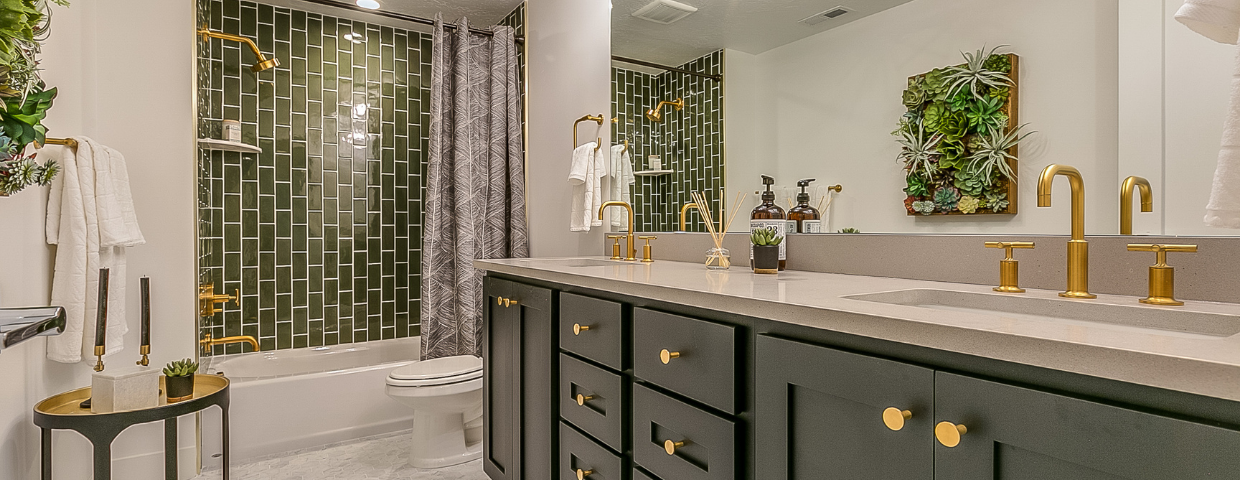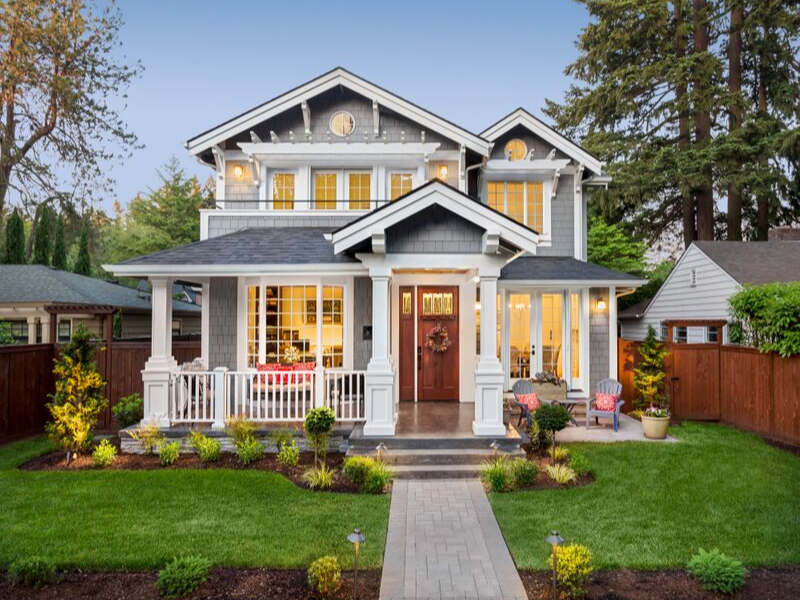Friday Fun Facts – What Remodeling Projects Are Best For Resale?

Thinking about remodeling your home?
In 2023, Americans spent approximately $363 billion upgrading and remodeling their homes. Not all remodeling projects are created equal… so which investment gives the best return when it comes to resale value?
It might not be a surprise that the best money to spend upgrading your home is in the kitchen – it’s the place where most homeowners spend the majority of their waking hours. According to research from the National Association of Realtors, it’s also where remodelers will see the biggest return on investment.
Here is the ranking of various projects in terms of the value they add to the home:
-
-
- Complete kitchen remodel
- Kitchen upgrade
- HVAC replacement
- Owner’s suite renovation
- Bathroom renovation
- Finishing a basement
- Adding a bathroom
-
Bottom line: Home upgrades are a smart play, and kitchens are where the real money is. These renovations aren’t just about looking good – they’re about boosting your home’s value and making your space work for you. So whether you’re dreaming of granite countertops or a sleek new stove, your kitchen remodel is likely to pay off when it’s time to sell.
Simple Bathroom Upgrades

The thought of upgrading a bathroom often brings to mind large-scale renovations, demolition, and hefty price tags. Even projects like replacing a backsplash or repairing tile can be more involved than you might think. However, it’s possible to give your bathroom a makeover without breaking the bank (or your back). Whether you’re looking to just freshen it up or make it feel like your own personal spa, these simple projects can help take your bathroom to the next level.
Upgrade your Décor
If you want to make a big splash without spending big money, consider upgrading your bathroom with new décor. A fresh coat of paint on the walls or a bold, patterned wallpaper can completely change the character of the space, while accent pieces like a new shower curtain and towel racks can reinforce your color choices. Installing shelving is a simple, functional tactic that gives dimension to your walls. Whether it’s in the shower, above your toilet, or beside your vanity, a shelf can save surface space while helping to tie the room together.
Upgrade your Tub
Upgrading your tub doesn’t have to mean buying a replacement. Simply refinishing your tub will have it looking brand new and helps you save money. Over time, tubs accumulate cracks, dings, and discoloration due to mold, but refinishing can cure these imperfections right away. Start by removing all hardware from the tub. Sand the whole surface, fill in any cracks or holes with putty or epoxy, then sand them smooth. Apply multiple layers of primer and topcoat, give it a buff, and enjoy your brand-new bathtub.
If refinishing your tub is too much to handle, consider simply touching it up. Fill in any cracks and apply a fresh line of caulking around the surface. After this is done, shop around for new tub hardware to polish off your cost-effective bathtub makeover.
Upgrade Your Vanity
With just a few tweaks, you can turn your vanity area from a mirror with counter space to an impactful centerpiece. Instead of going all out with a new cabinet install, simply replacing your cabinet hardware and drawer pulls can make a big difference. Think of ways your new hardware can reinforce the style of your bathroom. Match them with your shower rod, faucet, and showerhead to make your bathroom more eye-catching.
Your vanity also offers a great opportunity to add some color to your bathroom. Giving it a fresh coat of paint will help to liven up the space at a low cost. For wooden vanities, a re-stain is a great way to give them new life. Start by removing the doors and drawers. Apply wood stripping to all surfaces, then let them sit for the recommended time. Now you can begin to scrape away the old finish. Sand down all surfaces and apply the primer before staining the wood. Once your stain settles in, apply a second coat and your vanity will be good as new.
Finishing Touches
Well-organized surfaces and compartments will help to create serenity in your bathroom. Whether it’s in the shower, the medicine cabinet, or below the vanity, look for multipurpose organizers that help cut down on bathroom clutter and save space. Add in natural elements like bamboo and river rocks to make your bathroom feel like a soothing sanctuary.
For more ideas on affordable home makeovers, check out our tips for upgrading your bedroom, home office, and kitchen.
DIY Remodeling vs Professional Remodeling

Deciding whether to DIY a remodeling project or leave it to a professional is a matter of weighing the risks and rewards, time, and budget. Before you start applying a new coat of paint or go about knocking down a wall, create a plan for your remodel to help you decide which projects you can handle, and which ones belong in the hands of a pro.
Create Your Remodeling Plan
Knowing your plans for your remodel will help to determine your timeline and budget, which will inform your DIY-vs-Pro decision-making. Set specific goals for each project so you’ll know when you’re getting off track but remain flexible in your planning to leave room for any unexpected hurdles that will inevitably pop up in the remodeling process. Your budget will also help you decide who should execute certain projects. For example, if you’re budgeting more for a kitchen remodel than any other project, that is a likely candidate for professional help.
If you’re having trouble deciding the best route to take with your remodeling projects, ask yourself the following questions:
- What risks am I comfortable taking on?
- How much time am I willing to dedicate to this project?
- Does this project require a permit?
- Do I have any experience with this kind of remodel?
- Am I comfortable giving up control of this project?
DIY Remodeling Pros and Cons
Pros: Taking a DIY approach to remodeling projects pays dividends in many ways. Without having to pay labor costs, you stand to save significant money by tackling a project on your own. Going DIY also allows you to set your own schedule for the project. And of course, the sense of ownership and pride you will feel knowing you completed the project on your own is a priceless feeling for a homeowner.
Cons: DIY projects can be consequential. Mistakes at any point in the renovation process can lead to greater costs and sometimes, hiring a professional to fix the mistake. Unfortunately, this can result in the loss of significant time and money.
Professional Remodeling Pros and Cons
Pros: Professionals are inherently more experienced, bringing their specialization to the table on every home renovation project, so you can expect them to perform high-quality work that will increase the value of your home.
Cons: Getting professional quality work means paying for it. When budgeting, expect higher costs for any project you’re thinking of outsourcing to a pro. Bear in mind that, especially for large-scale renovation projects, your home will become a construction site. Accordingly, you may need a back-up plan, such as a temporary kitchen set-up or a short-term rental home .
DIY Remodeling vs Professional Remodeling: Around the House
The following list breaks down which projects are typical DIY candidates and which ones homeowners commonly opt for professional help to complete. However, the decision is ultimately up to you. If you have your heart on tackling a project on your own, gather your tools and make it happen!
Kitchen
- Professional: Any large-scale structural changes, new gas lines, or new plumbing projects should be handled by a professional.
- DIY: Simpler kitchen projects like a backsplash or faucet replacement and any cabinet finishing tasks are perfect DIY candidates.
Bathroom
- Professional: Plumbing installation, running electricity, or any projects involving an expansion or alteration to your bathroom structure.
- DIY: If your bathroom is simply in need of some new tile work, basic medicine cabinet restoration, or minor flooring improvements, roll up your sleeves and DIY.
Backyard
- Professional: Consider hiring a professional for any significant outdoor projects like concrete builds, in-ground pools, and technical deck work.
- DIY: Common backyard DIY projects include building a garden tool shed, building a fence, and refinishing a deck.
General
- Professional: It is best to hire pros for new roofing, any foundation work, and extensive demolition projects. For asbestos and drywall finishing, it’s easiest, and safest, to go with the pros.
- DIY: Any interior painting projects, basic electrical work, or simple trim and door upgrades.
If you’re planning on going through a remodel while you live at home, read this first. For more information on how certain renovations may impact the value of your home, talk to your Windermere agent.
 Facebook
Facebook
 X
X
 Pinterest
Pinterest
 Copy Link
Copy Link


